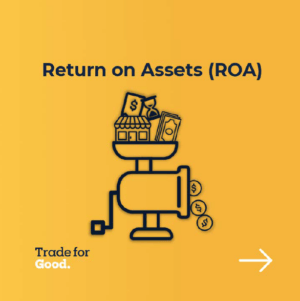 What Is Return on Assets (ROA)?
What Is Return on Assets (ROA)?
ROA refers to a financial ratio that indicates how profitable a company is in relation to its total assets.
ROA is used to determine how efficiently a company uses its assets to generate a profit. The metric is commonly expressed as a percentage by using a company’s net income and it’s average assets.
A higher ROA means a company is more efficient and productive in generating profits.

Key Takeaways
- You can calculate a company’s ROA by dividing its net income by its total assets.
ROA = Total Assets/Net Income
- It’s always best to compare the ROA of companies within the same industry because they share the same asset base.
- ROA factors in a company’s debt, while Return on Equity does not.

ROA vs. Return on Equity (ROE)
Both ROA and ROE measure how well a company utilizes resources.
The difference is:
- ROA factors in how leveraged a company is and how much debt it carries.
- ROE only measures the return on a company’s equity without considering its liabilities.

How ROA is Used by Investors
ROA can be used to indicate how well a company is increasing profits on each dollar it spends.
A falling ROA can indicate over-investment in assets to produce revenue growth.
What Is Considered a Good ROA?
- 5% is considered good.
- Over 20% is excellent.
It’s worth comparing ROAs within the same sector.

-
This is where you can find the Fundamental data on the Trade for Good software
Read More
You can download the offline guide here Return on Asset Guide

What you learn here has been used in our Trade for Good software.
Click on the button to find our software education videos.
You can read more of our educational articles in the Trade for Good Learn section
Trade for Good Learn


